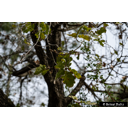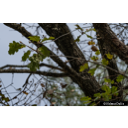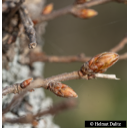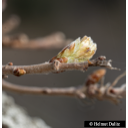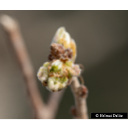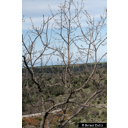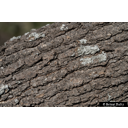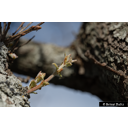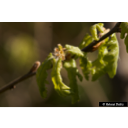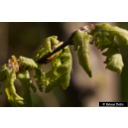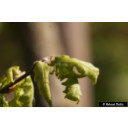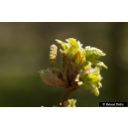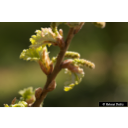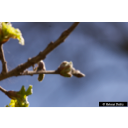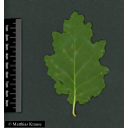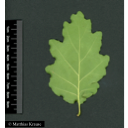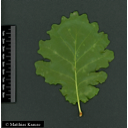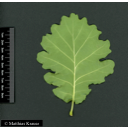Useful information about the taxon (species, subspecies, variety...)
Quercus pubescens Willd. 1796
Fagaceae
(APG IV)downy oak, pubescent oak
Akzessionnummer: SP-NB-117-15865
Pflanzjahr: 2016
Taxon concept: The Plant List (2010)
Distribution: Central and Southern Europe; Turkey, Caucasus
Quercus pubescens Willd. - Accepted: Quercus pubescens Willd. bei The Plant List (2010); Familie: Fagaceae (APG III)Quercus pubescens Willd. - Accepted: Quercus pubescens Willd. bei Zander 2008; Familie: Fagaceae (Zander 2008)Quercus pubescens Willd. - Accepted: Quercus pubescens Willd. bei The Plant List (2014), version 1.1; Familie: Fagaceae (APG III)Quercus pubescens Willd. - Accepted: Quercus pubescens Willd. bei The Plant List (2014), version 1.1; Familie: Fagaceae (APG IV)Quercus pubescens Willd. - Accepted: Quercus pubescens Willd. bei BfN Checklist Flora DE; Familie: Fagaceae (APG IV)Quercus pubescens Willd. - Accepted: Quercus pubescens Willd. bei World Flora Online; Familie: Fagaceae (APG IV)Quercus pubescens Willd. - Accepted: Quercus pubescens Willd. bei World Flora Online - APG IV (Angiosperms); Familie: Fagaceae (World Flora Online - APG IV (Angiosperms))
- Flowers
- monoecious species
- Flower ecology
- wind-pollinated (anemophilous)
- Life form
- woody, tree
- Leaves
- dark green, leathery leaves
- Foliage persistence
- deciduous or semi-deciduous
- Fruits
- acorns in cupules which are covered with triangular hairy scales
- Fruit ecology
- gravity- dispersed (barochorous) and animal-dispersed (zoochorous) (esp. Eurasian jays)
- Soil conditions
- preferentially on dry, warm, nutrient-rich and alkaline (mostly on limestone), medium profound, loam or stone soils that are rich in humus (duff)
- Root type
- deep-rooted (taproot)
- Natural occurrence (habitat)
- dry oak forests and shrubs, thermophilic mixed deciduous forests, dry hills, sunny slopes (vineyards)
- Vegetation typ and synecology (plant community)
- temperate/sub-Mediterranean mixed mesophytic to mesophytic/xerophytic broad-leaved deciduous forests; character species of the Quercetum pubescenti-petraeae
- Usage
- wood is mainly used as firewood, otherwise for construction and furniture; occasionally taken in traditional medicine because of high level of tannins in the leaves and the bark
- Phytopathogenic organisms
- is highly susceptible to the oomycete pathogen Phytophthora quercina, which contributes to oak death
Erhardt, W., Götz, E., Bödeker, N. & Seybold, S. (2008): Der große Zander. Enzyklopädie der Pflanzennamen. Band 2. Arten und Sorten. Eugen Ulmer KG, Stuttgart (Hohenheim), 18. Aufl., 2103 S.; Haider, M. et al. (2005): Wildbienenkataster. See: https://www.wildbienen-kataster.de; Maurizio, Anna et al. (1982): Nektar und Pollen - die wichtigsten Nahrungsquellen der Honigbiene. 4. Ehrenwirth, München, 3, überabeitete Auflage; Pritsch, Günter et al. (1985): Bienenweide.. Neumann-Neudamm, Melsungen; Ruppertshofen, Heinz et al. (1995): Der summende Wald - Waldimkerei und Waldhygiene.. Ehrenwirth, München, 8., völlig neubearb. und erw. Aufl.; Schick, B. & Spürgin, A. (1997): Die Bienenweide. Eugen Ulmer Verlag, Stuttgart, Auflage: 4., völlig neubearb. u. erw. A., 216 S. 978-3800174188.; The International Plant Names Index (2009). Published on the Internet http://www.ipni.org; Courtesy to IPNI, 2009. Exported from IPNI at date: 2009-09-22 20:17:51; Westrich, P. et al. (2018): Die Wildbienen Deutschlands.. Ulmer Verlag ISBN 978-8186-0123-2.;
Diese Webseite verwendet Google Maps, um Karten und Standorte von Pflanzen in den Hohenheimer Gärten anzuzeigen. Dadurch werden unter Umständen Daten an Google weitergeleitet, was mit einer Verarbeitung Ihrer personenbezogenen Daten verbunden sein kann. Die Datenschutzerklärung von Google finden Sie hier: Datenschutzerklärung von Google

